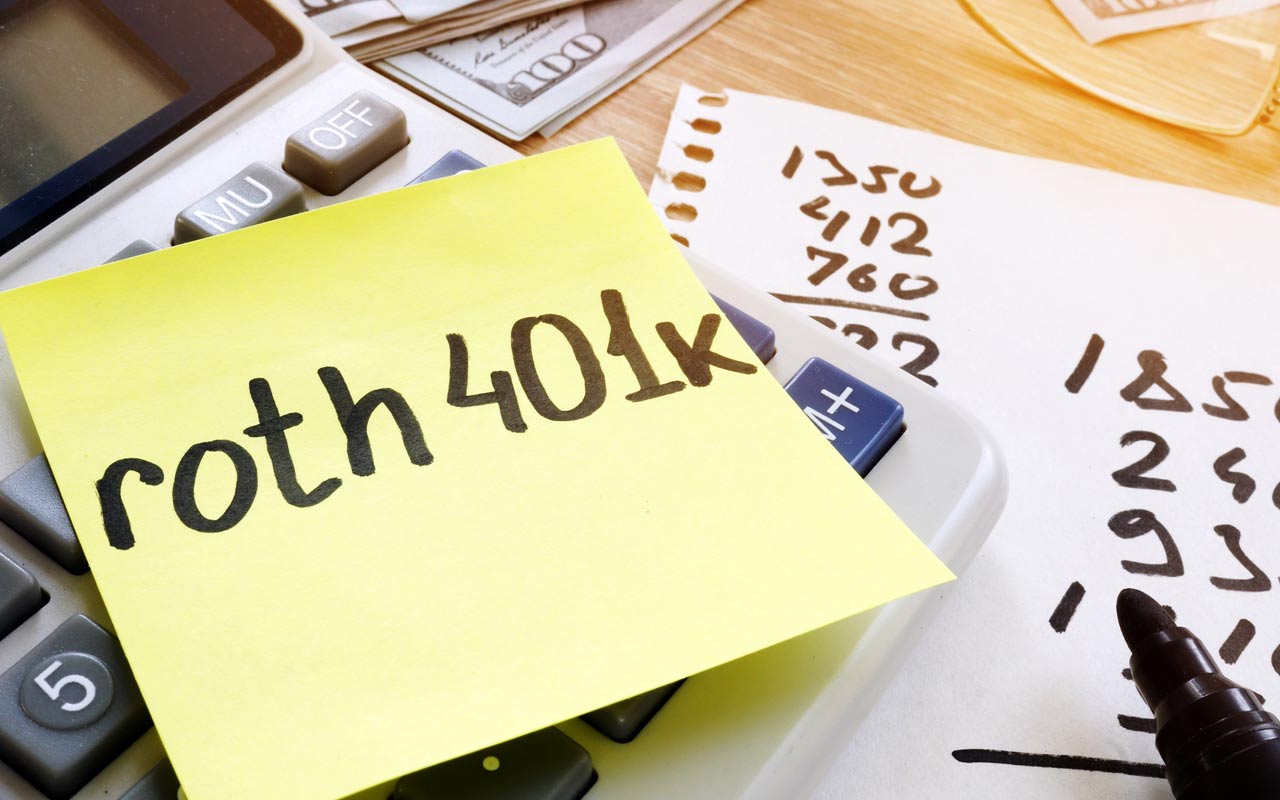6 Ways to Build a Roth Retirement Nest Egg
Building up a Roth nest egg can pay off in spades for retirees.


Building up a Roth nest egg can pay off in spades for retirees. Money in a Roth IRA grows tax-free, and the account doesn’t have required minimum distributions—so you withdraw the money only when you need it. Withdrawals are also tax-free, so they don’t trigger other consequences. Roth withdrawals don’t count in the calculations for taxing Social Security benefits or determining Medicare premium surcharges, for instance. Roths “give retirees a lot of flexibility,” says Gil Charney, director of the Tax Institute at H&R Block, “and some control over their tax liability.”
But there isn’t just one route to getting money into a Roth. You can take a variety of paths to reach tax-free nirvana—some more well-known than others. We’ll provide you the map, so you can choose which routes might best serve your situation.

Roths and Taxes, Part 1
No matter which route you choose, consider how your current tax rate stacks up against your expected future tax rate. After all, the toll for getting tax-free withdrawals later is to forgo a tax deduction on your IRA contributions today. So you need to weigh whether your current tax rate is lower than it’s likely to be in the future. “There is no deduction when you contribute, but you’re not taxed when money is distributed,” says Mark Luscombe, principal federal tax analyst for Wolters Kluwer Tax and Accounting. If you think your tax rate is higher now, then you might want to stash money in a tax-deferred account to get a tax break now and pay tax at a lower rate when you take the money out in retirement.
But “a traditional IRA has an embedded tax liability,” says ReKeithen Miller, a certified financial planner in the Atlanta office of Palisades Hudson Financial Group. You will pay ordinary income tax on both contributions and earnings withdrawn from a traditional account in retirement, whereas after-tax contributions stashed in a Roth can produce tax-free earnings. Many retirees may be surprised at how much taxable income they have in retirement, from Social Security benefits to IRA required minimum distributions and pension payouts, which could boost them into a higher tax bracket than expected.
- You don’t have to put all your retirement money into Roth accounts, but having a Roth as part of your nest egg provides tax diversification and flexibility. “You can pull money out of a Roth when you need cash,” says Rob Austin, director of research at Alight Solutions, a benefits administration firm. Need to cover an unplanned expense, such as a new roof? Draw from the Roth and your taxable income for the year isn’t affected.

Roths and Taxes, Part 2
Another factor making Roths particularly attractive now: Tax reform lowered ordinary income tax rates but scheduled them to sunset by 2026. A future Congress might extend those lower rates, but for now, there is an eight-year window in which we know tax rates are lower than they would have been otherwise. And it is possible tax rates could rise down the road. “Current lower rates might not be around forever,” says Luscombe.
Of course, you should take your own personal tax situation into account. If you expect that your income will drop significantly when you retire in two years, you may want to wait until then to stash money in a Roth. Also, consider whether you will move in retirement to a state that has no or low income tax, says David Levi, senior managing director at CBIZ MHM, and compare that rate to the tax rate of the state you live in now. You’ll owe state as well as federal tax on a Roth conversion, so if you expect your state tax burden will fall in retirement, you might want to put off conversions until after you move.
If your stage is set such that putting money in a Roth looks attractive now, here are a variety of ways to build that golden tax-free nest egg.

Option 1: Contribute to a Roth IRA
If you are still working and fall under certain income thresholds, you can stash up to $6,500 in a Roth IRA in 2018 if you are 50 or older. You can put another $6,500 in a Roth IRA for a spouse who’s 50 or older, assuming your earnings can cover the total contributions.
To contribute fully to a Roth, your modified adjusted gross income must be under $120,000 for single filers and under $189,000 for married couples filing jointly. The ability to contribute to a Roth completely phases out at $135,000 or more of modified AGI for single filers and at $199,000 or more for joint filers. In between those thresholds, you can contribute a reduced amount.
While there are income limitations for Roth IRA contributions, there is no age maximum. Unlike traditional IRAs, which prohibit contributions after age 70½, Roth IRAs allow contributions at any age.
Original owners of Roth IRAs do not have to take required minimum distributions, so the money in the account can grow tax-free for as long as you like. If you do need to tap the account, you can withdraw any of the money tax-free once you are 59½ or older and have had at least one Roth IRA open for five years.
If you don’t meet those two requirements just yet, you may still be able to tap some Roth money without tax consequences. You can take out after-tax direct contributions at any time; withdrawals are considered taken first from contributions. The next money to come out is considered taken from any converted amounts (more on conversions later)—that money can be withdrawn penalty-free if you are 59½ or older. Lastly, earnings come out—those are tax-free and penalty-free if you are 59½ or older and you’ve had at least one Roth IRA open for five years or more.

Option 2: Contribute to a Roth 401(k)
The Roth 401(k) is becoming commonplace these days. More than three-fourths of plans offer a Roth 401(k), according to a 2017 Alight Solutions study, whereas about a decade ago, only 11% of plans had the option.
- Roth 401(k)s can be a particularly great option for high earners because there are no income limitations to contribute. You put in after-tax contributions that grow tax-free, and future withdrawals are tax-free.
You can also stash significantly higher amounts in a Roth 401(k). A worker who is 50 and older can put away up to $24,500 for 2018 in a Roth 401(k).
Unlike Roth IRAs, Roth 401(k)s do have required distributions once you hit age 70½, unless you are still working for the employer that sponsors the plan. If you are no longer working, you can avoid RMDs from the Roth 401(k) by rolling the money into a Roth IRA.
To qualify for tax-free earnings, you must have had a Roth IRA for at least five years, even if you had the Roth 401(k) for more than five years. “You can roll the money over, but then the holding period does restart if you haven’t opened a Roth IRA before,” says Eric Bronnenkant, head of tax at Betterment for Business. While that’s only an issue if you withdraw earnings in the first five years, he says, it’s a good idea for Roth 401(k) holders to open a Roth IRA right away, even with a small amount, to get the five-year clock ticking.

Option 3: Convert Money From Traditional Accounts
Besides directly contributing to a Roth IRA, you can convert money from a traditional IRA to a Roth IRA. The amount you convert will be added to your taxable income for the year, so while you can convert any amount you want to, converting too large an amount might spike you into a higher tax bracket than usual. A smart strategy to consider: Convert small amounts over a series of years to mitigate the tax hit.
Conversions come with virtually no limitations, other than the ability to afford the tax bill, which ideally you want to pay with money that is outside the retirement accounts. With no income thresholds, earned income requirement or age ceiling, Roth conversions may be the easiest route for high earners, retirees and older seniors to build a Roth nest egg.
Like regular contributions to a Roth IRA, the earnings on a conversion won’t be tax-free until you hit age 59½ and have had one Roth IRA open for at least five years. But there’s a second five-year test that applies to the amount you actually converted: Those younger than 59½ have to wait five years after the conversion to tap the converted amount penalty-free. If you’re under 59½ and tap the converted amount within the first five years of the conversion, you’ll pay a 10% early-withdrawal penalty. Once you hit age 59½ or satisfy the five-year window, the threat of that penalty on converted money goes away. Do a conversion after you are age 59½, and you don’t have to worry about the five-year conversion test at all.
If you are retiring or switching jobs, you could also roll some or all of your traditional 401(k) to a Roth IRA. Any pretax money you convert from a 401(k) to a Roth IRA will result in a tax bill, of course.
Starting this year, conversions from a traditional IRA to a Roth IRA can no longer be reversed. (That has always been the case with 401(k) to Roth IRA conversions.) Tax reform ditched the ability to recharacterize a Roth conversion, which allowed flexibility to undo the move if the market tanked or you needed to shrink your tax bill for the year. “Now, you have to really look at how serious you are about having money in a Roth,” says Luscombe.
Doing a Roth conversion later in the year, when your tax burden for the year is more clear, may now make more sense. Or consider converting smaller amounts, says Miller. Perhaps convert $5,000 or $10,000 several times throughout the year, and you could forgo the conversions later in the year if something changes in your tax picture.
Remember that if you are already subject to required minimum distributions, you must take the RMD for the year first. You can then convert all or part of the remaining traditional account balance to a Roth IRA.

Option 4: Backdoor Roth
Once considered a controversial move, the “backdoor Roth” has become widely accepted in recent years—and many experts say the IRS gave the maneuver its blessing under tax reform. While anyone can use it, the move is ideal for high earners who can’t contribute directly to a Roth or make deductible IRA contributions.
The move works like this: A taxpayer makes nondeductible contributions of up to $5,500 (or $6,500 if 50 and older) to a traditional IRA in one year. He then converts that account to a Roth IRA. If done quickly so the money hasn’t earned anything, the conversion won’t create a tax bill. And the taxpayer could do this year after year, building up a sizable Roth nest egg.
A big caveat: If you also have deductible contributions in a traditional IRA, you’d only qualify for a partially tax-free conversion because pro rata rules come into play. Under those rules, any conversion has to take into account the ratio of nondeductible IRA contributions to all your IRA contributions. So if you have a $100,000 IRA with only $10,000 of nondeductible contributions, only 10% of any conversion would be tax-free. Keep in mind that the IRS considers all your traditional IRAs to be one: If you have one IRA with just deductible contributions and another IRA with only nondeductible contributions, pro rata rules still apply.
Employees may have a workaround for this problem, though. If you participate in a 401(k) that allows you to roll IRA money into the plan, you can roll the deductible contributions and pretax earnings into the 401(k). A 401(k) can only accept pretax money, says Bronnenkant, so nondeductible contributions would be left behind in the IRA. You could then roll the isolated nondeductible contributions into a Roth IRA—do so quickly, and the conversion could be tax-free.

Option 5: 401(k) Rollover Split
The IRS blessed another move a few years ago that helped shore up the backdoor Roth move. In a 2014 notice, the IRS allowed a 401(k) account holder to split up a rollover, rolling after-tax contributions directly to a Roth IRA and pretax contributions and earnings to a traditional IRA. The ability to split the contributions when rolling money out of the 401(k) allows the taxpayer to do a Roth conversion tax-free by rolling just the after-tax contributions. Not all 401(k)s allow after-tax contributions, so if you’re interested in going this route, check your plan’s rules.
You may not have to separate from service to use this maneuver. If a 401(k) plan allows in-service distributions, an employee could use this move while still working.
This split move can also crack open the “mega backdoor Roth.” For 2018, 401(k) contributions from all sources (including employer and employee) can total up to $55,000 (up to $61,000 for those 50 or older). After the employee’s full annual elective deferral limit is met and any employer match is added in, the leftover amount up to that higher limit could be stashed in the 401(k) as after-tax contributions if the 401(k) allows it. The after-tax money put into the 401(k) could be rolled out to a Roth IRA tax-free. If interested in this mega move, read more about the restrictions on this upper limit at IRS.gov and consult a tax adviser.

Option 6: Inherited 401(k)
There’s an even lesser-known route to a Roth, and it’s available to nonspouse heirs of a traditional 401(k). These nonspouse heirs can roll the account directly to an inherited Roth IRA, if the 401(k) plan allows it. It’s “a one-time chance to do a conversion,” says Bronnenkant. The heir must pay the tax bill on the converted amount, but she may choose to make that move if she would rather take RMDs from a Roth than from a traditional account.
That’s a key difference from the rules for IRA heirs. A nonspouse heir of a traditional IRA cannot convert the inherited IRA to a Roth; only the original owner can make the conversion.
Get Kiplinger Today newsletter — free
Profit and prosper with the best of Kiplinger's advice on investing, taxes, retirement, personal finance and much more. Delivered daily. Enter your email in the box and click Sign Me Up.

-
 Stock Market Today: Great Power Affairs Mesmerize Markets
Stock Market Today: Great Power Affairs Mesmerize MarketsThe U.S. and China are at least talking about talking about tariffs, and investors, traders and speculators are showing a little less fear.
By David Dittman
-
 Is Walmart Plus Worth It?
Is Walmart Plus Worth It?There are tons of exciting Walmart Plus benefits – but are they worth the $98 annual fee?
By Rachael Green
-
 What to Do With Your Tax Refund: 6 Ways to Bring Growth
What to Do With Your Tax Refund: 6 Ways to Bring GrowthUse your 2024 tax refund to boost short-term or long-term financial goals by putting it in one of these six places.
By Rachael Green
-
 What Does Medicare Not Cover? Eight Things You Should Know
What Does Medicare Not Cover? Eight Things You Should KnowHealthy Living on a Budget Medicare Part A and Part B leave gaps in your healthcare coverage. But Medicare Advantage has problems, too.
By Donna LeValley
-
 12 Great Places to Retire in the Midwest
12 Great Places to Retire in the MidwestPlaces to live Here are our retirement picks in the 12 midwestern states.
By Stacy Rapacon
-
 10 Cheapest Small Towns to Live In
10 Cheapest Small Towns to Live InThe cheapest small towns might not be for everyone, but their charms can make them the best places to live for plenty of folks.
By Dan Burrows
-
 15 Reasons You'll Regret an RV in Retirement
15 Reasons You'll Regret an RV in RetirementMaking Your Money Last Here's why you might regret an RV in retirement. RV-savvy retirees talk about the downsides of spending retirement in a motorhome, travel trailer, fifth wheel or other recreational vehicle.
By Bob Niedt
-
 The Cheapest Places To Retire in the US
The Cheapest Places To Retire in the USWhen you're trying to balance a fixed income with an enjoyable retirement, cost of living is a crucial factor to consider.
By Stacy Rapacon
-
 The Six Best Places to Retire in New England
The Six Best Places to Retire in New Englandplaces to live Thinking about a move to New England for retirement? Here are the best places to land for quality of life, affordability and other criteria.
By Stacy Rapacon
-
 13 Smart Estate Planning Moves
13 Smart Estate Planning Movesretirement Follow this estate planning checklist for you (and your heirs) to hold on to more of your hard-earned money.
By Janet Kidd Stewart
